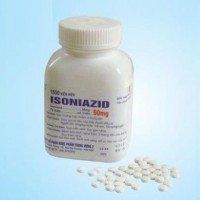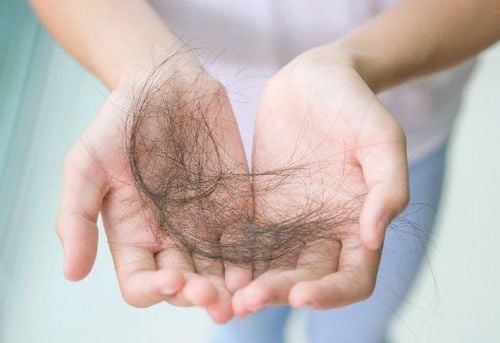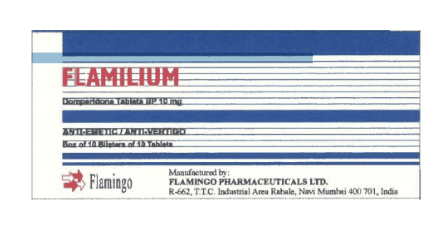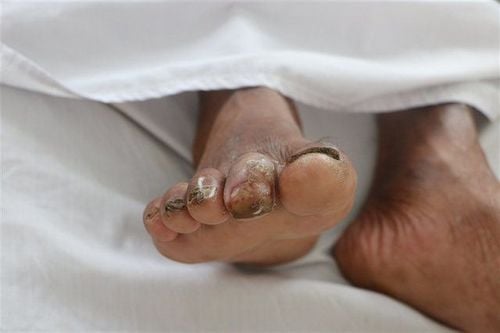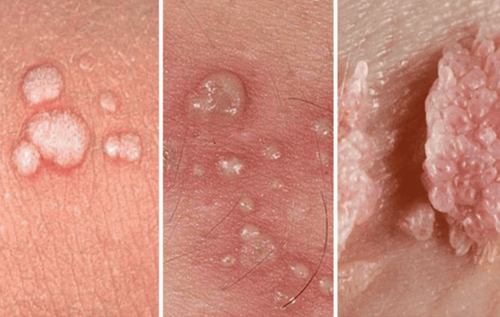This is an automatically translated article.
Melioidosis, also known as Whitmore's disease, is an infectious disease that can infect humans or animals. The disease is caused by the bacterium Burkholderia pseudomallei, which is found in contaminated water and soil. The disease occurs mainly in tropical climates, especially in Southeast Asia and northern Australia, as it is transmitted to humans and animals through direct contact with contaminated pathogens.1. How is Whitmore's disease transmitted?
Anyone can become infected with Melioidosis through direct contact with contaminated soil and surface water. Humans and animals are thought to contract the infection by inhaling contaminated dirt or droplets, ingesting contaminated water, and coming into contact with contaminated soil, especially through skin abrasions.It is very rare for an infected person to get the disease by spreading it from another person. A few cases have been reported, with contaminated soil and surface water being the primary way in which humans are infected.
Besides humans, many animals are susceptible to melioidosis , including: Sheep; Goat; Stale; Horse; Cat; Dogs; Cattle...

Bất kỳ ai đều có thể bị nhiễm Melioidosis thông qua tiếp xúc trực tiếp với đất và nước mặt bị ô nhiễm
2. Symptoms of Whitmore's Disease
There are several different types of melioidosis, and each type causes different symptoms. However, it is important to note that melioidosis has a wide range of signs and symptoms that can be confused with other diseases such as tuberculosis or pneumonia.Local infection:
Local pain or swelling Fever Ulcers Abscesses Lung infections:
Cough Chest pain High fever Headache Loss of appetite Blood infections:
Fever Headache Respiratory failure Abdominal discomfort Joint pain Disorientation Spread of infection:
Fever Weight loss Stomach or chest pain Muscle or joint pain Headache Seizures The duration of exposure to the causative organism and the onset of symptoms are not well defined, but may be from one day to many years, but generally symptoms appear two to four weeks after exposure.
Although healthy people can get melioidosis, some people are more susceptible, such as people with the following:
Diabetes Liver disease Kidney disease Thalassemia Cancer or another unrelated immunosuppressive condition HIV-related Chronic lung disease (such as cystic fibrosis, chronic obstructive pulmonary disease (COPD), and bronchiectasis)
3. Risk of exposure to Whitmore's disease
While melioidosis infection has occurred worldwide, Southeast Asia and Northern Australia are the areas where the disease is common. In the United States, cases reported in previous years have ranged from 0 to 5 and occurred in travelers and immigrants from places where the disease is widespread. In addition, melioidosis is found among the militaries of all nations that have served in areas where the disease is widespread. The greatest number of cases of melioidosis have been reported in:Thailand Malaysia Singapore Northern Australia Although rarely reported, cases are thought to occur frequently in:
Papua New Guinea Most Indian subcontinent Southern China Hong Kong Taiwan Vietnam Indonesia Cambodia Laos Myanmar (Burma) Outside Southeast Asia and Australia, cases have been reported in:
South Pacific (New Caledonia) Sri Lanka Mexico El Salvador Panama Ecuador Peru Guyana Puerto Rico Martinique Guadeloupe Brazil Parts of Africa and the Middle East
4. Treatment of Whitmore's Disease

Khi chẩn đoán nhiễm melioidosis, bệnh có thể được điều trị bằng cách sử dụng thuốc thích hợp
Depending on the type of melioidosis infected and how it is treated, it will affect the long-term outcome of the patient. Treatment usually begins with intravenous antibiotics for 10-14 days, followed by 3-6 months of oral antibiotic therapy.
Intravenous treatment includes:
Ceftazidime administered every 6-8 hours. Or: Meropenem given every 8 hours Oral antibiotic therapy includes:
Trimethoprim-sulfamethoxazole orally every 12 hours or Amoxicillin/clavulanic acid (co-amoxiclav) taken every 8 hours If the patient is allergic to penicillin, they should be informed. Notify doctors and other health care professionals to administer alternative medicine.
5. Prevention of Whitmore .'s Disease
In areas where the disease is widespread, exposure to contaminated soil or water may increase the risk of melioidosis. However, in these areas, to help reduce the risk of exposure, people can do the following:People with skin wounds and people with diabetes or chronic kidney disease are at increased risk melioidosis and contact with soil and standing water should be avoided. Farmers should wear boots when going into the field, which can prevent foot infections. Healthcare workers should use contact precautions (masks, gloves, and gowns) to help prevent infection.
Please dial HOTLINE for more information or register for an appointment HERE. Download MyVinmec app to make appointments faster and to manage your bookings easily.
Reference source: Cdc.gov; Medicinenet.com



